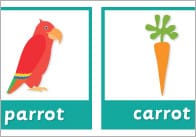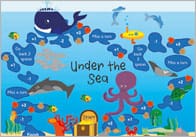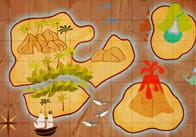Look after the pennies and the pounds will look after themselves
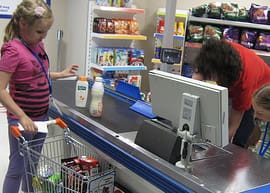
This old proverb struck a chord as I designed this activity to play at home. ‘School maths’ might be at risk of feeling more like a 1950s classroom under the new curriculum (September 2014). We must take action as parents and teachers to constantly make links with real life contexts, especially when our children are younger.
Here is a great way to make use of loose change whilst helping your child understand the cost of items bought in a shop.
– Collect 10p and 1p coins in a jar.
– Take your child shopping for a few cheap items in a shop.
– Pay by cash giving too much money so that the shop keeper has to give you some change.
– Keep the till receipt.
– Give your child a £1 coin to spend.
– Ask your child to select an item costing less than £1 from the bag of shopping. Eg a banana costing 53p.
– Pretend to be the shop keeper and ask for 53p.
– Your child can only pay with the £1 coin.
– Make ‘a till’ by place 10p coins in a container to the left of the container holding the collection of 1p coins.
– It is your turn to give change by placing 1p and 10p coins into your child’s hand. Say 53p out loud and then count out pennies one at a time until you reach 60p. Say “53p,” then take a coin and say “54p, 55p, 56p, 57p, 58p, 59p, 60p.” Pause. Now that you are at a multiple of 10 you can use your 10p coins. Say 60p and then pick up 10p coins, one at a time as you say “70p, 80p, 90p, £1.”
– Ask your child to count the change (47p).
– Check that this is correct by entering 47 + 53 into a calculator. The answer should say 100. (This helps to connect the sound of £1 with 100).
In real life we would use other denominations of coins (53p + 2p + 5p + 20p + 20p). But practical handling of 1p and 10p coins will support children’s understanding of place value where we operate in tens and ones in written calculations.
This calculation may be expressed using a number line in Year 2 or Year 3:
100p – 53p =

I think you will agree that this is time consuming.
The new curriculum (September 2014) requires pupils to START using formal written methods from Year 2 onwards:
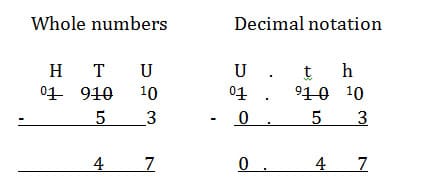
I hope you will agree with me that playing at shop in the kitchen will provide a more meaningful experience and set up rich foundations for what lies ahead in the classroom.
Popular Teaching Resources
Stay Up To Date
Sign up for our newsletter and we’ll let you know when we create new early years resources.

